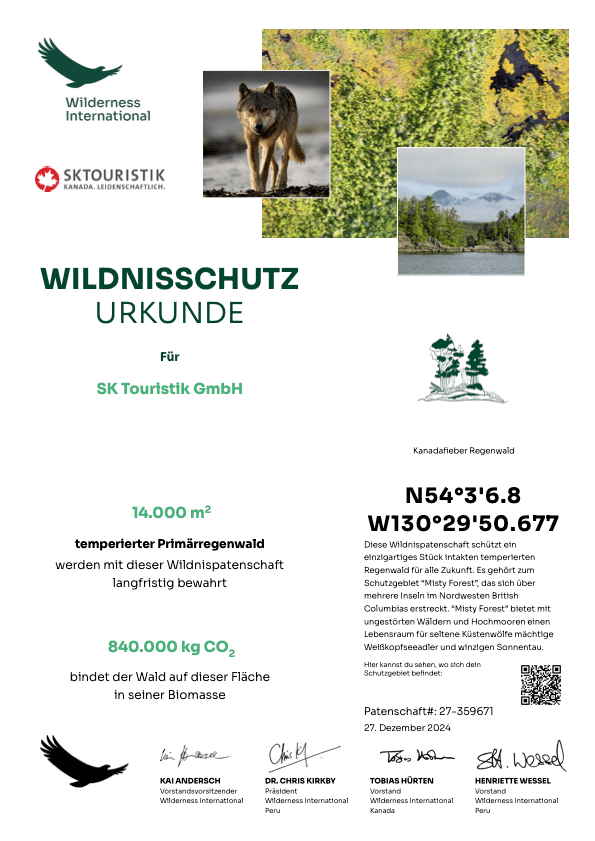Canada Fever is committed to the protection of endangered wilderness
For the preservation of the temperate rainforest
Together with Wilderness International, Kanadafieber is committed to preserving the temperate rainforest. Since 2018, the tour operator has been protecting 16 m² of rainforest per traveler to Western Canada. In the first few years, the donations were used to protect the rainforest in Toba Valley - home to one of the last healthy grizzly populations. Since 2023, the conservation contribution from each trip has gone to the temperate coastal rainforests on Porcher Island.
Let's continue on this path together and permanently preserve even more unique wilderness: Protect a piece of the Canada Fever Rainforest now.
Donations
m2 of old-growth forest
tonnes of CO2

Kanadafieber (SK Touristik) from Senden near Münster has stood for authentic, individual trips to Canada for 25 years. As a member of 1% for the Planet, the travel specialist is committed to investing at least one percent of its annual turnover in certified nature conservation projects. In addition, customers have the opportunity to increase the size of the Canada Fever forest through additional donations - as a sustainable vacation souvenir.
Canada fever in Toba Valley
Carsten Siegel from SK Touristik accompanied the Wilderness International team on an expedition to the Canada Fever Rainforest in September 2018 to see the work of the foundation and its impact for himself. A travel report.
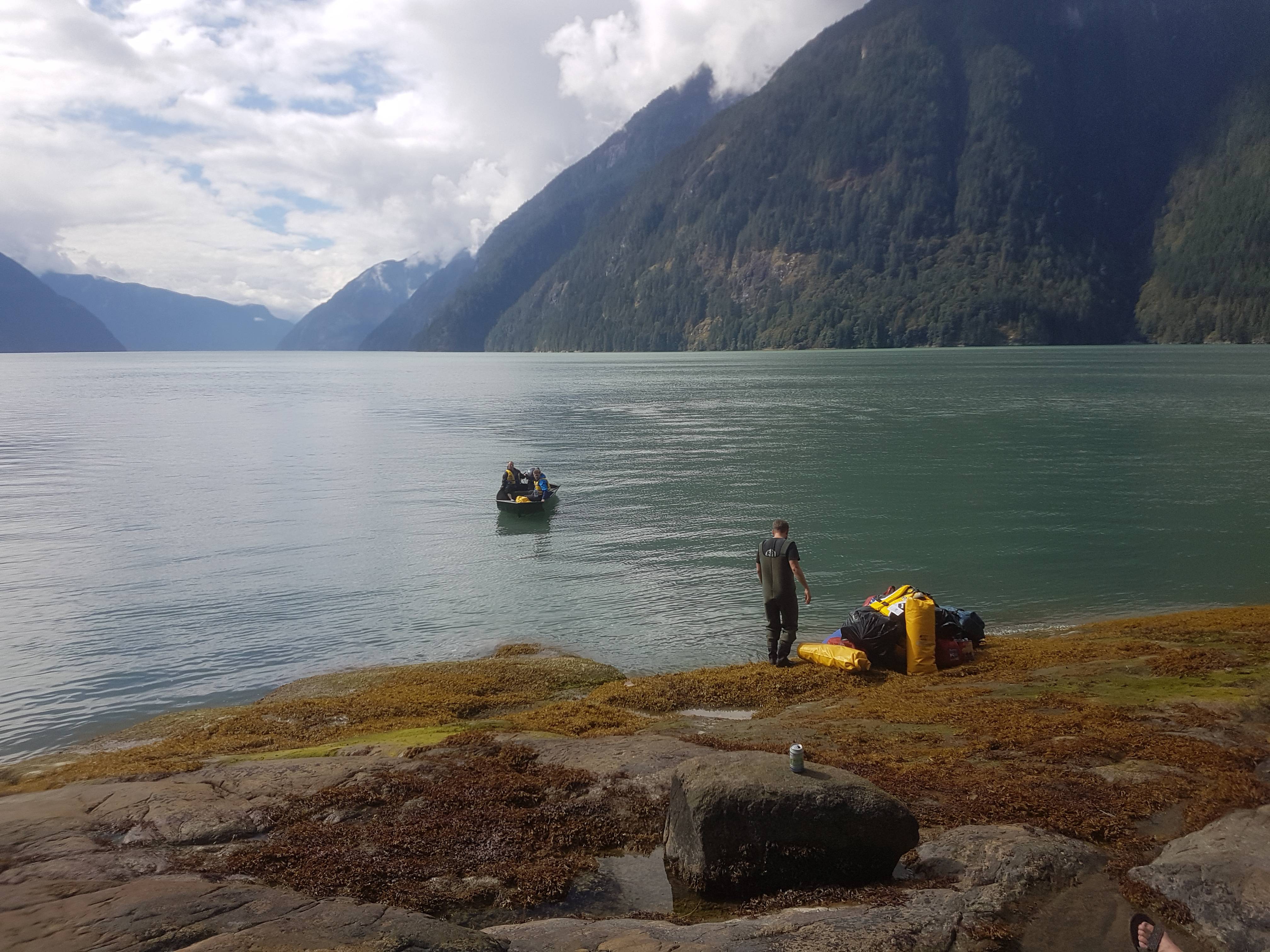
We land the boat on a small island and have to carry our luggage to the other shore on foot. I shoulder a duffel bag and walk into the 5 degree cold glacier water.
In between, another huge bald eagle flies close over the river. There is a gnawed salmon on the bank and the whole sandbank is full of fresh grizzly tracks - this seems to be a hotspot for fishing!
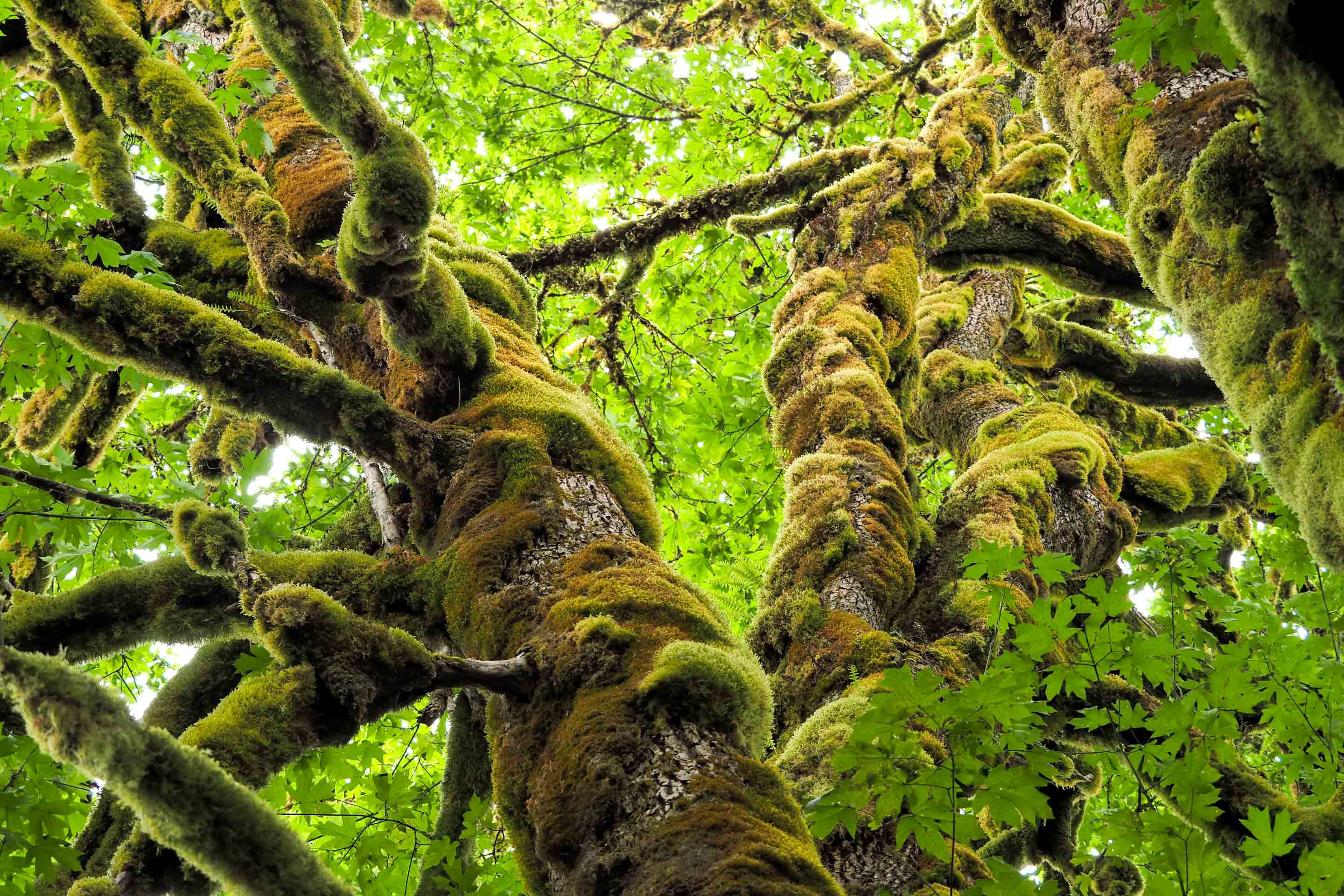
It is incredible how green, diverse and alive everything is. I am particularly impressed by a 700-year-old maple tree. The two trunks of the tree are covered in a thick layer of moss.

Further down I discover several wolf dens.

On our way, we repeatedly find scratch marks on the trees, large grizzly footprints and bear dens. We realize that we are in the middle of the bears' living room.

The temperate rainforest in Toba Valley really is a unique piece of nature. And it was a real adventure to get there.
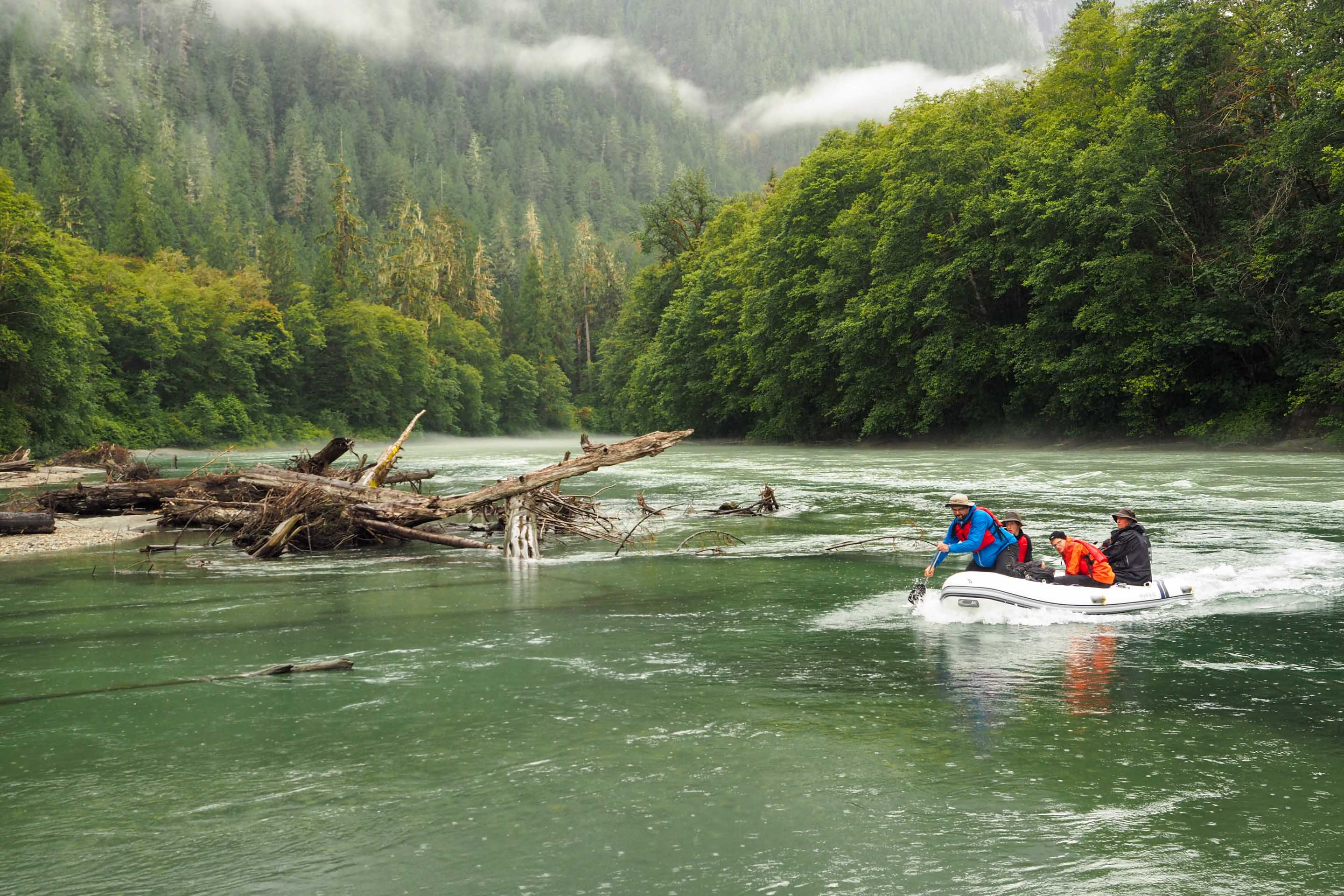
In front of us the Salmon River, behind us the rainforest, above us the eagles and around us the grizzlies. An unforgettable experience!
This expedition has definitely increased my respect for real wilderness and I am proud that we at SK Touristik can contribute to the preservation of these untouched habitats!
Carsten Siegel
Marketing, SK Touristik
Impressions from the protected area of SK Touristik in the Grizzly Forest in British Columbia.
Impressions from the protected area on Porcher Island
The wilderness areas that Canada Fever has been protecting in the temperate rainforest since 2023 are located on Porcher Island on the west coast of Canada. They are the most species-rich ecosystem in the northern hemisphere. Their ancient giant trees provide a safe habitat for an incredible number of animal and plant species.

A view of the treetops in Canada's temperate rainforest.
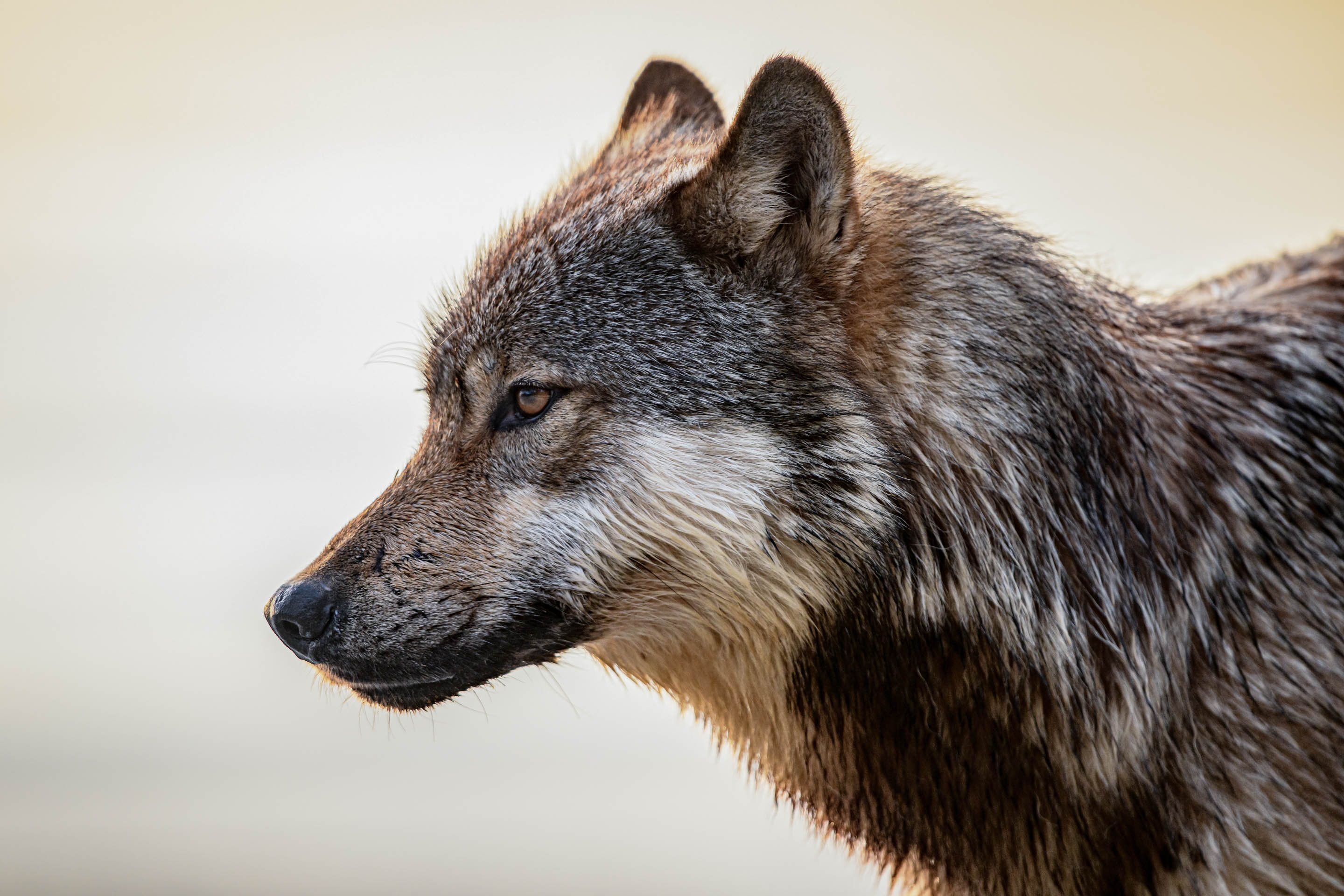
Rare coastal wolves roam the forests on Porcher Island.
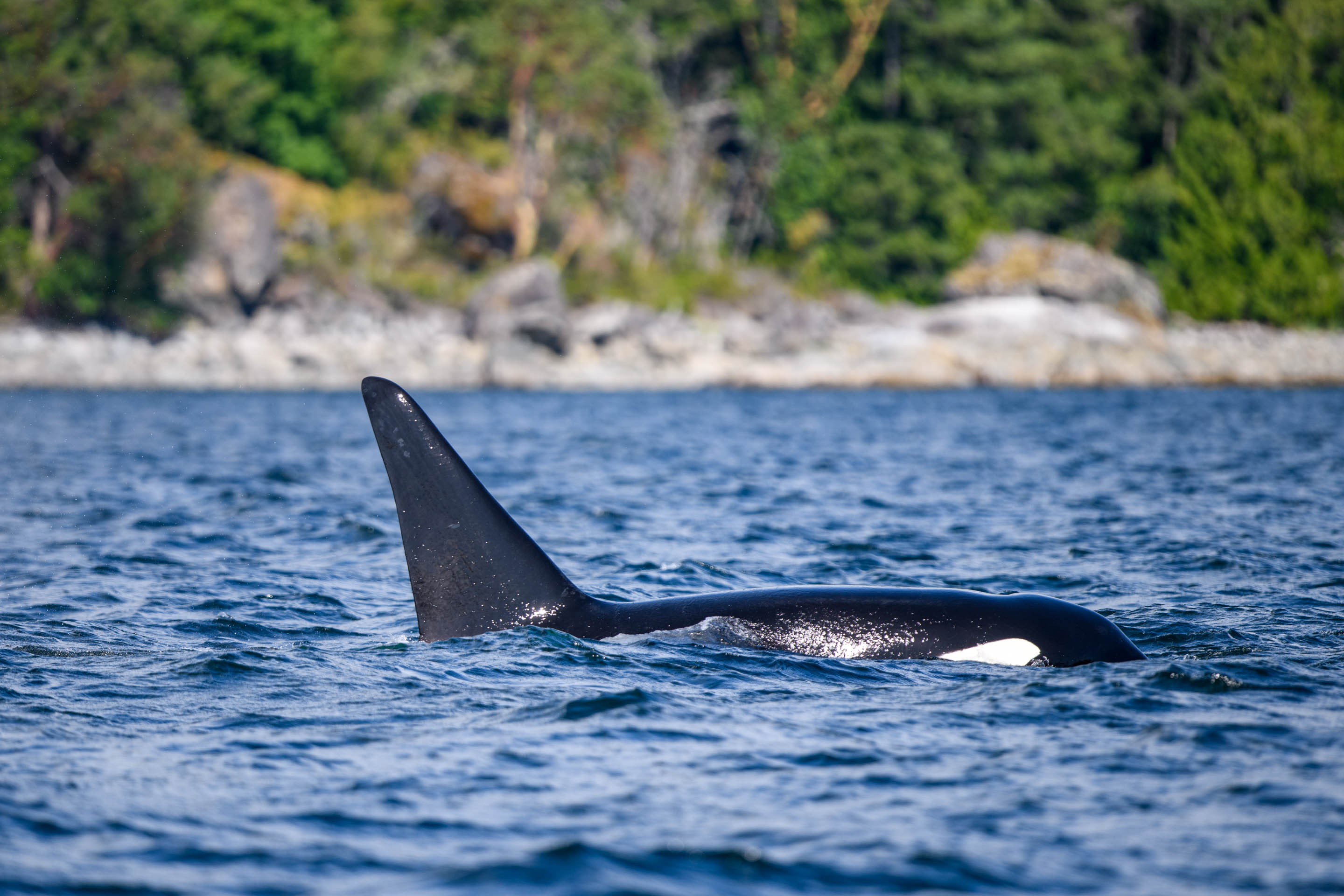
Orcas also feel at home in the protected coastal areas off western Canada.

In the silence of the forest bog, the rare sundew catches flies with its sticky tentacles.
Transparency
Why old-growth forest protection with WI?
It wasn't just the shared Canada fever that convinced SK Touristik of Wilderness International - it was also the transparent and concrete use of the donations: 1€ donation protects 1 m² of old-growth forest - forever. Donors receive a certificate with the geo-coordinates and an aerial photo of the protected forest area, as well as a tax-deductible donation receipt.
You too can protect a piece of the Canada Fever forest
Let's continue on this path together and preserve even more unique wilderness in the long term:
Your wilderness protection certificate
You will receive a personalized certificate of the piece of wilderness you protected immediately after your donation.
Protect temperate rainforest with Canada fever
About Wilderness International
The foundation, which is based in Peru, Canada and Germany, purchases legally secure wilderness areas and protects them for the future. The purchases are refinanced through donations, which ensure the long-term protection of the areas, supports environmental education projects, and research into CO2 storage and biodiversity.

Wilderness International purchases primary rainforest areas with land title and legally protects them for all future. Donations refinance the purchases and at the same time finance long-term protection as well as environmental education and research. Donors receive a personalized certificate with the exact geo-coordinates and aerial photograph of the forest area they are protecting. Thus, the use and impact of the donation is tangible and directly traceable. We are currently working in the temperate rainforest of Western Canada and the Amazon rainforest of Peru, where we are protecting ancient primary rainforests.
It is important to protect the rainforest because this is the only way we can stop species extinction and climate change. They are home to the world's greatest biodiversity and store huge amounts of CO2. It is also important to protect rainforests because they are the basis of our existence: they provide us with clean air, clean water and stable rainfall. They also cool the environment.
In Canada, good legal security helps us, as well as the legal situations and sanctions that even prohibit trespassing.
In Peru, we have additionally started a forest guardian program with local people. To ensure long-term protection, we also have several other measures in place. In general, we visit the areas on regular expeditions to check on them. We also work with local partners who inform us of any irregularities if necessary. The donations per square meter also already include the costs for property taxes.
Like no other, the legal form of the foundation allows a (charitable) purpose to be realized permanently and independently of outside interests, thus achieving the desired effects in the long term. It is thus the most long-term organizational construct currently known. Not even states, companies or national parks are designed for such a long term. This makes the foundation the only one that is oriented toward the lifespan of the ecosystems we protect.

